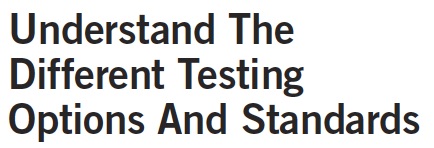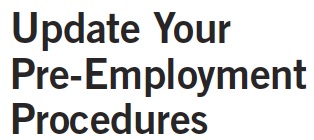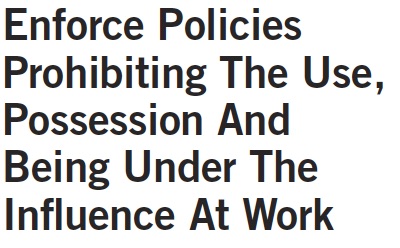Workplace Trends: Marijuana Legalization And Impact On The Workplace

iQoncept / BOLDG / Shutterstock.com
Marijuana is now legal in the U.S. in some form in 35 states and Washington, D.C. with seven additional states having decriminalized marijuana possession and two states legalizing CBD oil use. (Find the current status of marijuana legality in your state at disa.com/map-of-marijuana-legality-by-state.) Many experts expect the continued expansion of legalization of various forms.
Much like alcohol, no law requires employers to allow employees to use or be under the influence of marijuana at work. However, unlike alcohol, testing for the presence of marijuana presents a problem because it can be detected for much longer than a person experiences its side effects or symptoms.
So, what do you need to know and do as an employer?

Currently, 18 states have legalized medicinal marijuana and 17 states and D.C. have fully legalized marijuana for medicinal and recreational purposes. Several states also have laws preventing employers from taking employment actions against employees for legal off-duty conduct.

Recreational marijuana can be used by adults (usually 21 years of age or older) in limited amounts as they wish.
Medicinal marijuana requires a prescription from a health‑care provider due to covered reasons, which vary state-to-state. By definition, an employee who has a prescription for its use has a condition which may be protected under the ADA and ADAAA.
Cannabidiol (or CBD oil) is oil derived from the cannabis plant which is used to relieve a long list of issues including pain and inflammation as well as anxiety and depression, migraines, MS, epilepsy and Parkinson’s disease. It does not cause mind-altering effects as those seen in marijuana.

To have a better chance of recognizing if an employee is under the influence while at the workplace, you need to become familiar with common tell-tale signs including the stereotypical dilated pupils and odor of marijuana, but also:
- distorted sense of time
- impaired memory
- impaired coordination
- difficulty in thinking clearly
- mood swings
- hallucinations or delusions
- fear or anxiety
- increased appetite
Various factors, including amount consumed, concentration of THC, body weight and metabolism, if the person has eaten and general tolerance impact how long these side effects will be observed.

Marijuana can be detected using saliva, blood, urine or hair testing methods, each having different detection parameters and timing. Again, factors such as form (i.e., smoke or edible), repeated and regular usage, age and weight will impact if marijuana is detected and how long it will show up in a person’s system, ranging from 36 hours to 90 days.
Also, CBD oil itself may result in a positive THC drug result even though it does not cause the “high” of marijuana.

Background checks: You may not be able to consider past marijuana-related criminal convictions once decriminalized. Even in the states where use is still illegal but past convictions are decriminalized, you must disregard any reference to these convictions if they appear on a criminal history report.
Pre-employment drug screening: Unless the position falls under stricter federal regulations (such as DOT), consider the practicality of testing for marijuana after making a conditional offer of employment to a candidate.
- If your state has fully legalized marijuana use, you will be prohibited from taking any action on this result so you may be paying for something you cannot use or enforce. Furthermore, if legal, off-duty activities are protected in your state, then you may now have knowledge of an activity which, if you treat the person adversely or differently during employment, can create legal exposure for you.
- If medicinal use is legal, a positive result may lead you to ask about medical information to verify the legal use. This could then create ADA/ADAAA exposure as the candidate would have to reveal medical information requiring marijuana as a treatment.
In both situations, consider removing marijuana drug testing from your pre-hire process to eliminate this exposure. If you do keep it in your process, train anyone involved as to what is and is not allowed and what can and cannot be asked to clarify.

Given the impact on safety and productivity, employers are allowed to take action if an employee shows multiple side effects, especially if involved in a workplace accident. If you suspect an employee is under the influence of marijuana you should:
- Have another manager confirm multiple side effects being exhibited
- Remove the employee from their workspace, especially if they could cause harm to themselves, others or property
- Have someone take the employee for a drug test; do not let them drive themselves
- Take proper disciplinary action, including possible termination if the side effects are verified by a positive test
In states where marijuana is only legal for medical use, if the employee justifies the positive result claiming they have a prescription, verify their prescription card or ask for a note from their health-care provider.

As mentioned before, there is no law requiring employers to allow employees to use, possess, sell or be under the influence of marijuana while at work. Given the negative impacts to performance and safety, employers can and should take a no-tolerance stance to marijuana as well as alcohol and mind-altering drugs (even if prescribed) in the workplace. Clearly and repeatedly state this expectation and the repercussions for failing to meet this expectation to all applicants, candidates and employees throughout the hiring process and the employment relationship. Explain the company’s drug testing procedures and disciplinary action, including immediate termination, for failing to meet that expectation.

Given the changing regulations, we recommend staying current on the marijuana laws in your state. If you have applicants or employees based in other states, you also need to learn the laws in those states as well.
––––––––––––––––––––––––––––––––––––––––––––––––––––––––––––––––––––––––––

Medical News Today reports that research from 2017 estimates that the effects of a single marijuana cigarette can linger in the body for about three days, depending on how often the person smokes.
Research shows:
- For first-timers, tests may detect marijuana for about three days.
- In someone who smokes marijuana three or four times per week, the detection window is five to seven days.
- For people who smoke marijuana once a day or more, tests may detect it in their system for 30 days or longer.
- The type of test taken can also be a factor.
- Urine tests can detect marijuana in the urine for approximately three to 30 days after use.
- Saliva tests can detect marijuana for approximately 24 hours after use. Some saliva tests have detected marijuana for up to 72 hours.
- Hair tests are the most sensitive tests, detecting THC for up to 90 days after use. However, these tests are testing the oil in the skin that transfers to hair, and so they may occasionally show a false positive. A person who comes into contact with a THC-user could, theoretically, test positive on a hair test.
- Blood tests can only detect THC for three to four hours.
––––––––––––––––––––––––––––––––––––––––––––––––––––––––––––––––––––––––––
Consult with your employment attorney or HR consultant before implementing, revising or enforcing your marijuana/drug testing policy. Affinity HR Group continues to monitor the subtleties of the different state marijuana laws. PPAI members are encouraged to reach out to the company with any questions.
––––––––––––––––––––––––––––––––––––––––––––––––––––––––––––––––––––––––––
Paige McAllister, SPHR, SHRM-SCP, is vice president for compliance at Affinity HR Group, Inc., PPAI’s affiliated human resources partner. The company specializes in providing human resources assistance to associations such as PPAI and their member companies. www. affinityHRgroup.com.

